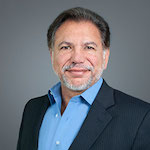Adult Stem Cell Therapy & Platelet Rich Plasma
Arthroscopic Subscapularis and Pulley Repair
Many people assume that most chronic shoulder problems stem from complications related to arthritis, but in fact this isn’t the case. The majority of shoulder pain is caused by rotator cuff problems. The rotator cuff is a group of four tendons and four muscles that connect the upper arm to the shoulder. Often, shoulder pain is the result of a problem with one of these tendons. Because of this, repairing all torn tendons with minimally invasive surgery has become the gold standard in orthopedics.
One of the more difficult tendons to repair is the subscapularis. By contrast, the other three rotator cuff tendons – the supraspinatus, infraspinatus and teres minor – are far easier to fix using arthroscopic surgery. Part of the reason for this is because the subscapularis works closely with the biceps pulley to center the biceps tendon into a groove as it enters the shoulder. That’s right – the biceps tendon attaches to the socket of your shoulder.
Dr. William F. Bennett has over 20 years of experience repairing torn tendons arthroscopically, and is one of the top orthopedic surgeons in Sarasota. In fact he is one of the world’s first orthopedic surgeons to use arthroscopic surgery to repair torn tendons. Dr. Bennett not only developed the surgical techniques for this tendon tear, but also classified different types of tears and reported on his outcomes in peer-reviewed journals.
Dr. Bennett discussed the 20-year history of arthroscopic surgery to repair subscapularis tears, which he first reported on in 1998 at the annual meeting of the American Academy of Orthopedic Surgeons. This was after spending nearly a decade compiling arthroscopic data and completing a Fellowship in upper extremity research in Fribourg, Switzerland. In 2001 Dr. Bennett published data compiled from over 165 arthroscopic shoulder patients over three years in the journal Arthroscopy.
“In this article I coined the term confluence of the superior glenohumeral and coracohumeral ligaments (biceps pulley),” writes Dr. Bennett, “describing the heads of the coracohumeral ligament as medial and lateral related to the biceps tendon, and noting that the origin of this ligament is the coracoid medial, and the humeral head lateral, the course of the ligament’s path.”
This article was followed by papers published by Dr. Bennett in Arthroscopy in 2002, 2003, and 2004 that presented new arthroscopic techniques developed by Dr. Bennett for repairing torn tendons with minimally invasive procedures. He noted that subcapsularis tears are often missed for a variety of reasons, and for that reason often go undiagnosed, leaving patients to suffer from chronic conditions for years. These conditions, if properly diagnosed, could be easily repaired with the arthroscopic techniques Dr. Bennett has perfected over the years, returning the patient to full mobility and eliminating chronic pain..
Dr. Bennett works closely with his patients to ensure they are receiving the highest standards of care and the most effective treatmentsIf you or someone you know is suffering from a torn tendon, contact Dr. Bennett’s office today to find out how he can help.






